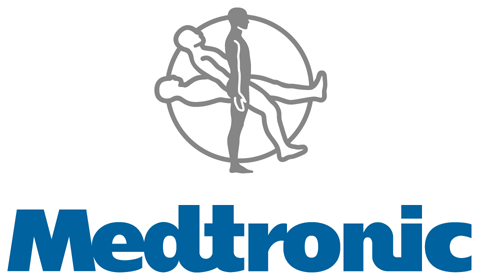Introduction
The lexicon of the financial world is full of phrases and jargon that are often tossed about without considering that there may be those who are not exactly familiar with the true meaning of the terms. It recently came to my attention that due diligence may be one of those idioms. In my own writings, I routinely recommend that readers conduct their own due diligence and/or comprehensive research. However, I recently had a reader ask me exactly what due diligence was and how to do it?
Consequently, the question inspired me to share how I conduct my own due diligence when evaluating common stocks I am interested in. But before I get too deep into how I personally perform due diligence, a few clarifying remarks may be in order. First and foremost, I consider due diligence an ongoing process rather than a specific act. Therefore, I consider due diligence an activity I engage in prior to investing, followed by the continuous monitoring of the company to stay current.

Furthermore, the term “due diligence” has different applications regarding whether it is being applied to areas of law, finance or other industries. Therefore, my remarks will deal exclusively with due diligence as it applies to researching a company (common stock) for investing purposes. Moreover, I believe this is an essential and extremely important process that especially applies to retirees that have elected to manage their own retirement portfolios.
At its core, the concept “due diligence” implies investigation or research. I will refrain from offering formal definitions in favor of a more straightforward explanation. In simple terms, due diligence implies doing your homework. The vast majority of the greatest investors that ever walked on this planet will echo the sentiment to know and understand the business behind any stock you are interested in owning. Thus, due diligence at its most basic level is the process and act of acquiring this necessary knowledge.
Therefore, on the face of it, due diligence seems rather simple. In reality, conducting due diligence properly and thoroughly can be both a daunting and time-consuming task. On the other hand, in spite of the required effort, I believe it is vital to success. Moreover, even when conducted properly, there are no guarantees that success will follow. However, I do believe the odds of success are greatly enhanced through making the necessary effort, but the following caveat must also be considered. Often it is not what we can know that may hurt us as much as what cannot be known.
Therefore, as essential and necessary as I believe due diligence is, it must also be recognized that it is not failsafe. Nevertheless, I contend the more you can know, the better your chances for success will be. My point being that although every investor will be better off by performing due diligence, they must also be willing to recognize and accept its limitations. In other words, we can learn a great deal from studying a company’s history, but at the end of the day we must, as accurately as we can, forecast the future. Making reasonable forecasts represent the most challenging aspects of due diligence.
There is one final aspect of due diligence that I believe worthy of mentioning in this introduction. My comments and this article will deal with due diligence exclusively from the perspective of the true investor. Speculators, day traders, options traders, etc. might perform an entirely different type of due diligence or research. The primary difference relates to whether you are interested in owning a business or attempting to make guesses about price movements. Therefore, my concept of due diligence applies to trying to understand and learn as much about the business behind the stock and attempt to calculate its intrinsic value as accurately as possible.
My Methodical Approach to Due Diligence
Fortunately, thanks to advances in technology, to include the Internet, financial information is more readily available and accessible to investors than it has ever been. Therefore, due diligence is significantly easier to conduct today than it was in years gone by. Even better, much of the essential information can be gathered at little or no cost. However, my own personal experience indicates that the best information must be purchased. But, since I market fundamental stock research I feel it’s only fair to alert the reader to my potential bias. On the other hand, I stand behind my statement.
What follows next is an example that I offer to illustrate the methodical approach that I use when conducting my own due diligence on a business (common stock). I want to be clear that my focus is based upon sharing my due diligence process, and not specifically about the example that I am using. In other words, I ask the reader to evaluate the process I am sharing over the specific company that I am using as my example.
Moreover, my process is oriented to supporting my own preferred investment philosophy. Nevertheless, it is once again, the process and methodology that I am sharing. Stated more plainly, an effective due diligence process is, and should be, investment-philosophy agnostic. In other words, it’s about being as thorough and comprehensive with your research given the tools available to you, in conjunction with the time and effort you are willing or capable of expending.
The first step in my due diligence process is the determination of whether or not I believe a given business (stock) is worthy of the time and effort required for further scrutiny. Since my approach relates to investing in the business behind the stock, my initial investigation relates to the fundamental strength and health of the business in question. In other words, do I believe the fundamentals underpinning the business are strong enough and therefore worthy of my continued efforts (Note: I purposely make it a point to ignore price or valuation with this first step).
The successful implementation of this first step requires digging into the company’s financial statements (10-Ks and 10-Qs). In the past, I struggled with this necessary first step because it required pouring over and digging through spreadsheets in order to access the fundamental data and information that I desired and needed to evaluate. But worse yet , since many companies typically only provide historical data going back 2-5 years on any single financial report, it required digging through several years of the company’s filings in order to gather and evaluate the essential data that I felt I needed. I found this task tedious, difficult and even boring.
Therefore, I developed the F.A.S.T. Graphs™ a Fundamentals Analyzer Software Tool that enabled me to review essential fundamentals at a glance. To those of you that do not have access to this powerful research tool, or a similar research tool, I cannot stress enough the importance of reviewing a business’ fundamental financial data as a crucial first step in your due diligence efforts. Nevertheless, I will utilize F.A.S.T. Graphs™ extensively throughout this article in order to clearly articulate how I personally conduct diligence.
Medtronic, Inc. (MDT) My Due Diligence Example
Medtronic, Inc. (NYSE:MDT) was a company that I had long admired based on the historical operating excellence that it achieved through good and bad times. However, Mr. Market was consistently pricing it too high for many years, perhaps because of its excellent operating record (consistent and above-average earnings growth). Therefore, I placed it on my dream list, periodically checking its valuation and patiently waiting for an opportunity to purchase it at a sensible valuation.
The following earnings and dividends only graph clearly depicts why I was attracted to Medtronic Inc. Earnings (the orange line and green shaded area on the graph) and dividends (the pink line and light blue shaded area) both steadily advanced without missing a beat even through our last two recessions. Therefore, Medtronic represents a quintessential example of the type of company that I prefer being a long-term shareholder of. In other words, this record of excellence made me very motivated to want to own this company. The reader should again note that I have left price out of the equation at this point.






